The Hack Squat is a highly effective exercise for building strength in the legs and glutes. This compound movement works for multiple muscle groups at once, making it a great addition to any lower-body workout. Whether you’re a seasoned weightlifter or just starting out, incorporating Hack Squats into your routine can help you achieve your strength training goals.
In this comprehensive guide, we’ll cover everything you need to know about the Hack Squat, including proper form, technique, and variations. From selecting the right weight to maximizing the benefits of this exercise, we’ll provide tips and advice on how to get the most out of your Hack Squat workout. Whether you’re looking to build muscle, increase power, or simply improve your overall fitness, this guide will help you achieve your goals.
So, if you’re ready to take your lower body training to the next level, read on and discover the benefits of the Hack Squat.
So, What Exactly Is A Hack Squat?
The squat hack machine has an inclined platform for you to stand on, as well as a movable backrest with shoulder padding and grips that glide up and down a track while you squat. As you squat and stand, you’ll add weight to racks linked to the back and shoulder pads, then press through your feet, exercising your glutes, hamstrings, calves, and hip flexors to drive the weights down the track. Your feet are positioned at a 45-degree angle on most hack squat machines, so your torso is somewhat leaning back.
What Is The Difference Between Hack Squats And Regular Squats?
Unlike traditional squats, which frequently require holding and balancing a weight (such as dumbbells or a barbell), the squat hack machine eliminates the need for stability, according to trainer Kehinde Anjorin, CFSC, NCSF, developer of The Power Method. You’ll primarily train your lower body since you’ll be moving the weight up and down the machine’s fixed track while resting your back and shoulders on the pads. You won’t require as much core engagement or upper-body stability as you would with a free-standing squat.
How To Perform A Squat Hack
This exercise is best done on a squat hack machine to obtain the most significant benefit from it. If you want to do this exercise at home or without having to line for a machine at the gym, stick with us because we’ll explain how to do other hack squat alternatives and variants, such as the barbell hack squat, later in this piece. However, first and foremost, here’s how to do a hack squat on the machine.
Equipment And Set-Up:
Because the squat hack machine is a strenuous workout for your quadriceps, make sure you warm up before.
Place a weight on the machine; begin with a modest load and gradually increase as you gain confidence in the action.
Position To Begin:
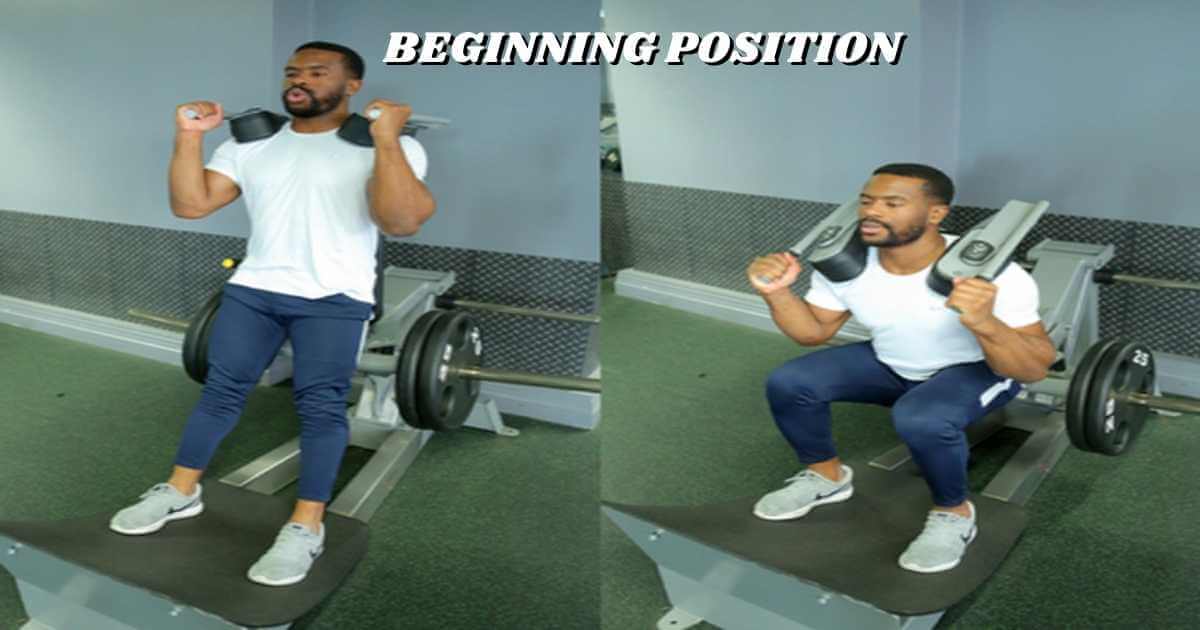
- To do the front hack squat, get onto the machine and stand on the foot platform with your back to the back pad.
- Make sure your shoulders are tucked beneath the shoulder pads and your back is flat on the support.
- Stand in the center of the footplate with your feet flat and shoulder-width apart.
- Extend your toes outwards slightly.
- Take hold of the side handles (also known as the safety bars) and pull them out. This generally entails turning the side handles, so they point out diagonally rather than forwards.
- Stand up by extending your legs but without locking your knees – this is your starting posture.
Implementation:
- Inhale and gradually drop the weight by bending at the knees while holding the safety grips.
- It down until your upper and lower legs form a 90-degree angle.
- Your knees should point in the same direction as your toes, and a straight line should run from your knees to your toes in this posture. Make sure your knees do not pass your toes since this will place a lot of strain on your knee.
- For a second, hold the squat posture at the bottom of the action.
- Exhale and steadily bring the weight back up by contracting your quadriceps.
- Return to the beginning posture by pressing through your heels to straighten your legs (without hyperextending your knees).
- That counts as one rep.
Engage the safety bars and then walk off the machine when you’ve finished the prescribed sets and repetitions.
Weights, Reps, And Sets
For this exercise, we propose a 5×5 training schedule, which is 5 sets of 5 repetitions. You’ll notice improvements if you use the 5x 5 training technique with roughly 85 percent of your 1 rep max.
The hack squat may also be used as a pump exercise to warm up the legs, especially the quadriceps, before doing a barbell squat. To achieve this, complete 10-12 repetitions for 3-4 sets with a lesser weight — 65-70 percent of your 1 rep max is a good starting point.
If you’re new to weightlifting, choose a weight that you can lift safely and with a perfect technique for the whole set if you’re starting. The amount of weight you use is entirely dependent on your fitness and strength, so start light and work your way up to a comfortable level of resistance.
Remember that the squat hack machine itself adds resistance (the precise amount varies from device to machine), and the action is less of a complex action than the regular it. Thus the significant muscles are put under tremendous stress. However, since the nature of the exercise puts less strain on the spinal column, if you have muscular quad strength, to begin with, you’ll be able to carry more weight and acquire greater power!
Suggestions For A Better Hack Squat Form
Break-In Squat Position
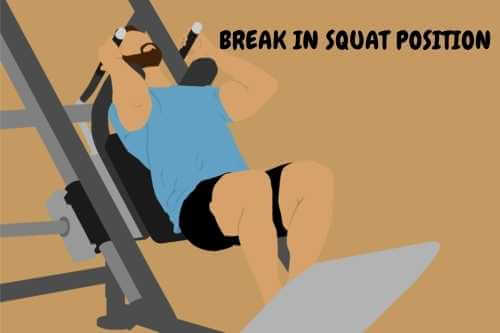
The pause at the bottom of the action (in the squat posture) will boost the hack squat’s intensity since it raises the targeted muscles under strain. The more time to develop power, the more influential the hack squat is.
Knees Shouldn’t Be Locked
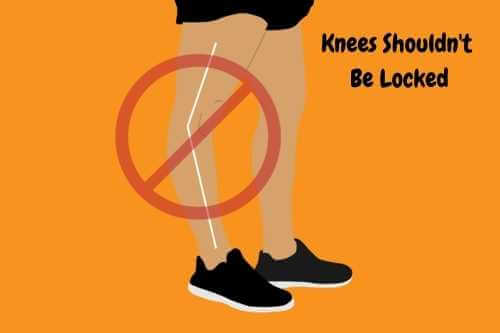
Your legs are stretched at the beginning position and the conclusion of each exercise. When your legs are ‘extended,’ one of the most crucial hack squat form recommendations is to avoid hyperextending or locking out at your knees. By avoiding knee hyperextension, you can maintain the movement’s strain on your quadriceps.
But, more significantly, not locking out at your knees will save you from injuring yourself. Knee hyperextension puts a great deal of strain on the knee, especially the knee joints. Locking out at the top of a hack squat may cause ligament damage, resulting in ACL, PCL, or cartilage injuries.
Maintain A High Head Position

It’s critical to maintain your back and glutes pressed on the cushioned support during the whole workout. Keeping your head up during the exercise will assist you in maintaining this form. Allowing your head to fall forward and away from the support is not a good idea. Maintaining proper form reduces your chances of being injured by the equipment and ensures that you receive all its benefits.
Complete The Whole Movement.
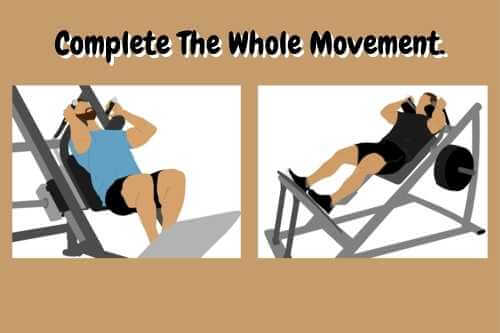
Some exercises benefit from partial repetitions or half repetitions; however, the hack squat is not one of them. Exercise the whole range of motion of the hack squat to get the most out of it. Partially repetition will provide more stress on the knee and less strain on the muscles throughout this workout. You’ll experience more significant benefits and have fewer injury risks if you go through the complete range of motion.
Squat vs. Hack Squat
The Protest Movement
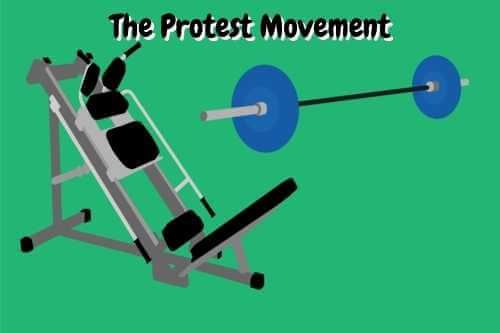
Both the hack squat and the standard squat have a similar movement pattern. In simplest terms, both exercises need you to stoop down by bending your knees, maintain the squat posture, and then push back up through your heels. Using the squat hack machine tries to keep your upper body upright, altering the action and a few other factors.
In contrast to the barbell squat, a free-weight workout, the hack machine requires a fixed range of motion. However, the machine’s restricted range of motion induces an unnatural movement that might result in a joint injury if done with a lot of weight.
Free-weight squats are the preferable option for athletes since they enable you to exercise in a full range of motion. Hack squats are an excellent addition to any leg day exercise if your objective is to bulk up your quadriceps.
conclusion
In conclusion, the Hack Squat is a highly effective exercise for building strength and power in the legs and glutes. By incorporating this exercise into your workout routine, you can target multiple muscle groups at once and achieve your strength training goals. Whether you’re a seasoned weightlifter or just starting out, following the tips and guidance outlined in this guide will help you get the most out of your Hack Squat workout.
From proper form and technique to selecting the right weight and variations, we’ve covered everything you need to know to make the most of this exercise. So, if you’re looking to build muscle, increase power, or simply improve your overall fitness, make the Hack Squat a staple of your workout routine and enjoy the many benefits this exercise has to offer.
Frequently Asked Questions
There’s a chance you’ll have a few more. We’ll address the most common queries regarding hack squats and associated workouts in this article.
Q: A hack squat engages which muscles?
A: The lower body, as well as the core (which includes the calves, quadriceps, hamstrings, and glutes). Compound workouts engage many muscles, which is one of its advantages. It will eventually assist with your range of motion.
Q: Is it true that a hack squat is healthier for your back than a regular squat?
A: It has the potential to be much more beneficial to your back than other popular workouts such as barbell squats.
Q: Should you do a hack squat or a conventional squat?
A: When it comes to a hack squat vs. squat, a hack squat is superior to a standard squat for muscle building.
Q: What makes barbell back squats more popular compared to conventional squats?
A: It’s a movement that comes naturally to the body and gradually develops muscle.
Q: What can I do to substitute back squats in my workout routine?
A: Front squats, for example, may be used to substitute back squats since they target the same muscles.
Q: Should you do a barbell hack squat or a leg press?
A: It depends on your objectives. However, a hack squat is superior for increasing muscular mass.
Q: How do front squats differ from back squats in terms of fitness?
A: Front squats are less taxing on your lower back than back squats.
Q: Will squatting to the ground strengthen my quadriceps?
A: It depends on your body’s angle, but a front squat is a good option.
Q: Deadlifts or squats, which should I do first?
A: Because squats are gentler on your muscles and gradually build them up, it’s best to perform the first to get your body ready for deadlifts.
Q: In a barbell squat, which muscles are involved?
A: The glutes, hamstrings, and adductors (groin muscles).
Q: What is the best way to squat without a rack?
A: You’ll want to do a barbell hack squat with the barbell behind your back and a wooden block to raise your heels.
Q: How many squats should you do?
A: There is no exact amount since it depends on the individual’s strength, but three sets of 12 to 15 repetitions are good starting points.